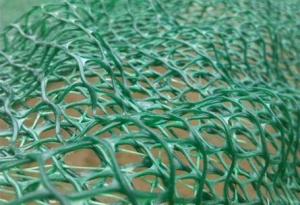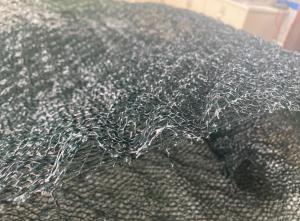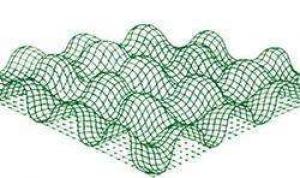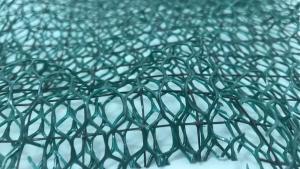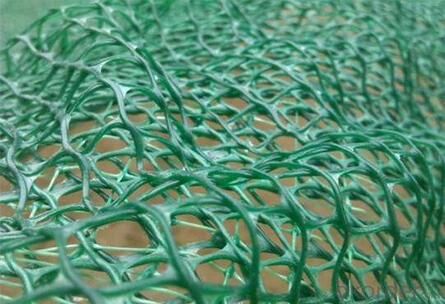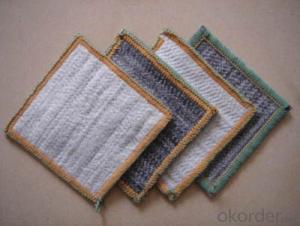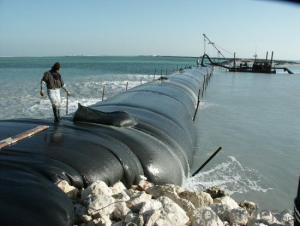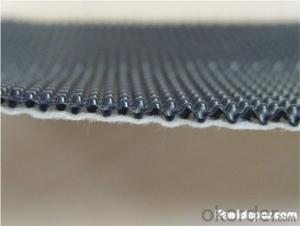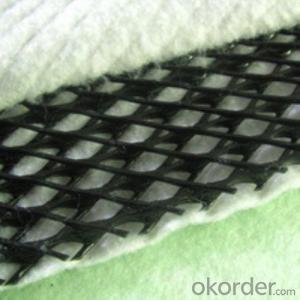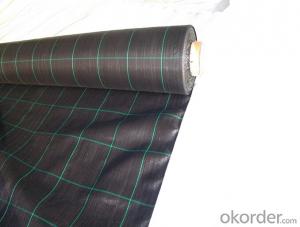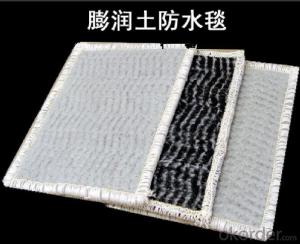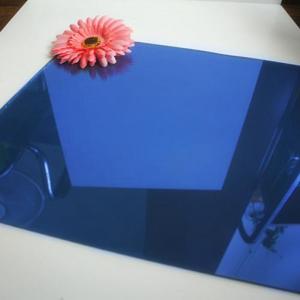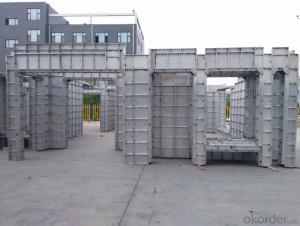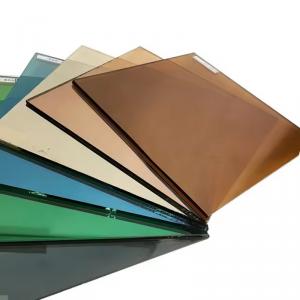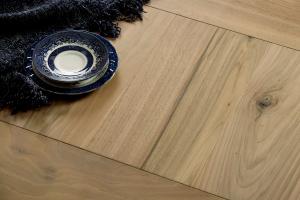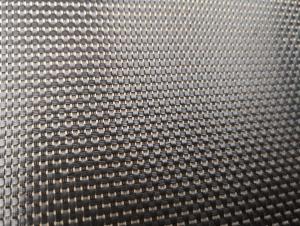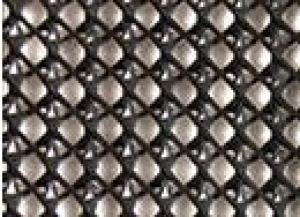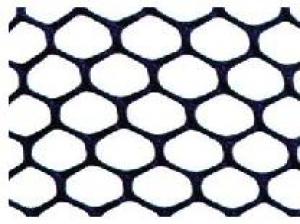3D Geomat Erosion Control Mat And Plastic Geomat
- Loading Port:
- Qingdao
- Payment Terms:
- TT or LC
- Min Order Qty:
- 30000 pc
- Supply Capability:
- 500000 pc/month
OKorder Service Pledge
OKorder Financial Service
You Might Also Like
Description:
CMAX Geomat is a new kind seed planting material with tridimensional structure, which can effectively prevent the soil being washed away, and increase the area of virescence, and improve our environment very well.

Specification:
Item: EM2, EM3, EM4, EM5
Thickness: 10mm-16mm
Width:2m or as request
Length:50m or as request
Color: green or black color
Property:
1) Before the greensward grows, it prevents the surface of the land from the erosion of the wind and rain.
2) Form compound protection layer with the vegetable, standing the wash-out of the high water level and large speed current.
3) Replace the concrete, asphalt, and block, using in the slope surface protection of roadway, railway, river-way, dyke, and the hillside, etc.
Application:
1) Prevent the surface of ground form weather beaten before the seeds growing up.
2) The compound protection layer will be forming after the grass grow up, which can endure wash by high level and high speed water.
3) It can be a substitute of the concrete, bitumen, stone, and so on to the perfect slop protection material. So it can be widely used in highway, railway, riverway, embankment and so on.
- Q:How do earthwork products contribute to land remediation and restoration?
- Earthwork products, such as soil, clay, and gravel, play a crucial role in land remediation and restoration. These products are used to address various issues, including soil contamination, erosion, and land degradation. By importing or redistributing these materials, earthwork products can help restore the natural balance of the land, improve soil quality, and stabilize slopes. Additionally, these products can be used in the construction of wetlands, reforestation projects, and other ecosystem restoration efforts, promoting biodiversity and enhancing the overall health of the land.
- Q:Are earthwork products suitable for road construction?
- Yes, earthwork products are suitable for road construction. Earthwork products like soil, gravel, and aggregates are commonly used in road construction as they provide a stable base and help in improving drainage. These materials are cost-effective, readily available, and can be easily compacted to meet the required specifications for road construction.
- Q:Are earthwork products resistant to chemical spills and contamination?
- Yes, earthwork products are generally resistant to chemical spills and contamination. These products, such as geomembranes, geosynthetics, and geotextiles, are designed to provide a barrier against chemicals, preventing them from seeping into the ground or water sources. They are often used in applications where chemical resistance is crucial, such as landfill liners, containment ponds, and industrial waste management facilities. However, the specific chemical resistance may vary depending on the type and quality of the earthwork product used.
- Q:How do geocells help in slope protection applications?
- Geocells provide effective slope protection by confining soil and aggregate materials, thus enhancing their stability and resistance to erosion. These three-dimensional honeycomb-like structures prevent soil displacement and retain the materials within the cells, preventing erosion and slope failures. Additionally, geocells can be filled with vegetation or other erosion control materials to further enhance their performance in slope protection applications.
- Q:What are the advantages of using geosynthetic clay liners in landfill construction?
- Geosynthetic clay liners (GCLs) offer several advantages in landfill construction. Firstly, they provide an effective barrier against the migration of contaminants, preventing their release into the surrounding environment. GCLs also have high hydraulic conductivity, allowing for efficient drainage of leachate and reducing the risk of groundwater contamination. Additionally, they are easy to install and require less maintenance compared to traditional clay liners, resulting in cost savings. Moreover, GCLs have excellent resistance to chemical and biological degradation, ensuring long-term stability and performance in landfill applications. Overall, the use of geosynthetic clay liners enhances the environmental protection and overall efficiency of landfill construction.
- Q:Can earthwork products be used in agricultural applications?
- Yes, earthwork products can be used in agricultural applications. Earthwork products such as soil, gravel, and mulch can be used to enhance soil quality, control erosion, improve drainage, and create raised beds or pathways in agricultural settings.
- Q:What are the different construction techniques using earthwork products?
- Some different construction techniques using earthwork products include embankments, cut and fill, grading and leveling, and soil stabilization. Embankments involve building up the ground to create a raised structure, such as a road or railway. Cut and fill involves excavating and removing soil from one area (cut) and using it to fill in another area (fill) to create a level surface. Grading and leveling involves shaping the ground to achieve a desired slope or contour. Soil stabilization techniques aim to improve the engineering properties of the soil, such as compaction, by adding stabilizing agents or reinforcing materials. These techniques are commonly used in civil engineering projects like road construction, building foundations, and landscaping.
- Q:What is the purpose of using geosynthetic meshes in embankment reinforcement?
- The purpose of using geosynthetic meshes in embankment reinforcement is to provide stability and strength to the embankment structure. These meshes act as a reinforcement layer, distributing the applied loads more evenly and reducing the potential for soil erosion and slope failure. Additionally, geosynthetic meshes can improve the overall performance and longevity of embankments by enhancing their resistance to settlement, settlement-induced deformation, and lateral spreading.
- Q:What are the benefits of using geotextiles in green roof applications?
- Using geotextiles in green roof applications can provide several benefits. Firstly, geotextiles act as a barrier between the growing medium and the underlying roof, preventing soil erosion and migration. This helps to maintain the integrity and stability of the green roof system. Additionally, geotextiles can enhance water retention, allowing for better drainage and reducing the risk of waterlogging, which can be detrimental to plant growth. Geotextiles also aid in weed suppression, preventing unwanted vegetation from invading the green roof. Moreover, these textiles can help to improve the overall insulation properties of the green roof, reducing energy consumption and providing thermal comfort. Overall, geotextiles play a crucial role in enhancing the performance and longevity of green roofs.
- Q:Can geosynthetics be used for lining stormwater detention ponds?
- Yes, geosynthetics can be used for lining stormwater detention ponds. They are often used as a cost-effective solution to prevent seepage and erosion in these ponds, providing an impermeable barrier that helps to retain and control stormwater runoff. Geosynthetics can enhance the overall performance and durability of stormwater detention ponds, ensuring their long-term effectiveness in managing and storing excessive stormwater.
1. Manufacturer Overview |
|
|---|---|
| Location | |
| Year Established | |
| Annual Output Value | |
| Main Markets | |
| Company Certifications | |
2. Manufacturer Certificates |
|
|---|---|
| a) Certification Name | |
| Range | |
| Reference | |
| Validity Period | |
3. Manufacturer Capability |
|
|---|---|
| a)Trade Capacity | |
| Nearest Port | |
| Export Percentage | |
| No.of Employees in Trade Department | |
| Language Spoken: | |
| b)Factory Information | |
| Factory Size: | |
| No. of Production Lines | |
| Contract Manufacturing | |
| Product Price Range | |
Send your message to us
3D Geomat Erosion Control Mat And Plastic Geomat
- Loading Port:
- Qingdao
- Payment Terms:
- TT or LC
- Min Order Qty:
- 30000 pc
- Supply Capability:
- 500000 pc/month
Offcanvas right
OKorder Service Pledge
OKorder Financial Service
Similar products
New products
Hot products
Hot Searches
Related keywords
